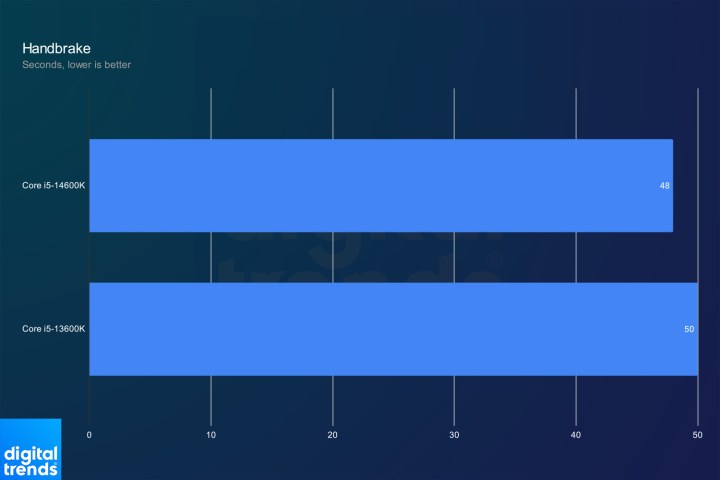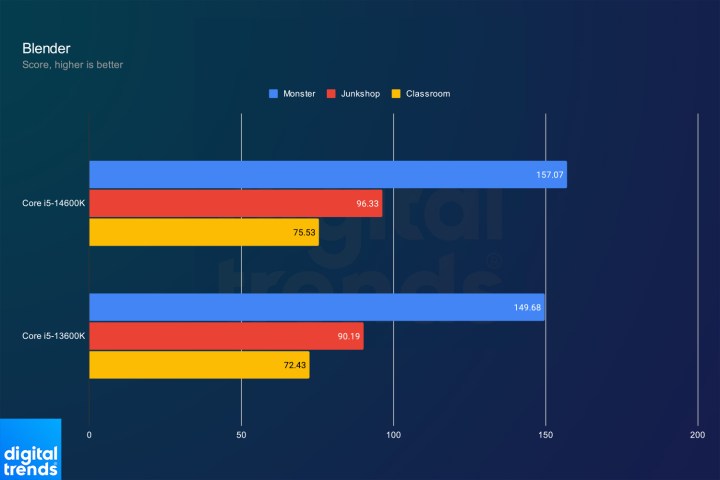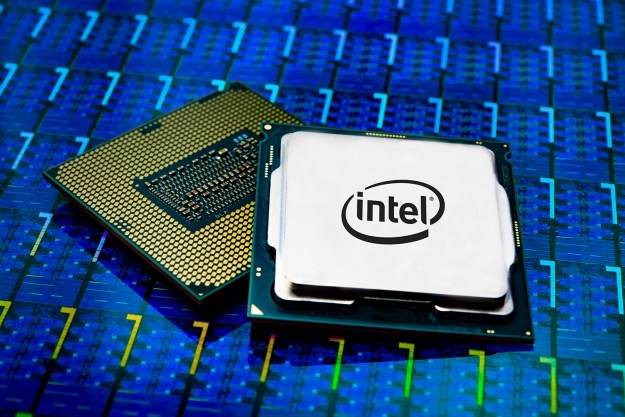Intel’s new Core i5-14600K isn’t a massive generational leap, as you can read in our Core i5-14600K review. No one expected it to be with Intel’s 13th-gen CPUs already sitting among the best processors. The bigger question is if it’s worth buying over last-gen’s Core i5-13600K considering that both are readily available for around the same price.
I’ve tested both chips extensively across a range of productivity and gaming scenarios. The Core i5-14600K brings some minor improvements over its last-gen counterpart, but those looking to stretch their dollar the furthest are better off sticking with the Core i5-13600K.
Pricing and availability

The Core i5-14600K and Core i5-13600K are both readily available at retailers, and unlike the Core i9-14900K and Core i9-13900K, there’s only a small gap in price. The newer Core i5-14600K will run you $340 at most retailers, but we’ve seen some prices dip to $330 and others go up to around $350. It seems the price is stable at $340, at least for the next few months.
The Core i5-13600K technically retails for $330, but it’s already marked down at retailers to $309. Over the next several months, the price will likely continue to drop. The Core i5-12600K, for example, was a similar price about a year ago, and you can pick it up now for about $215. Over the coming months, I suspect the price of the Core i5-13600K will drop to around $280.
Those are the prices for the K-series parts, but Intel also offers KF versions. These offer identical performance, and they’re unlocked for overclocking, but they lack integrated graphics. That brings down the price by about $30 more for each part.
The Core i5-14600KF is available for $312, while the Core i5-13600KF is available for $286. Although the price difference is close for the KF parts — about $30 across both chips — the fact that the Core i5-13600KF is available for under $300 is a big deal. As prices drop, it will likely hit $250 quickly.
Specs
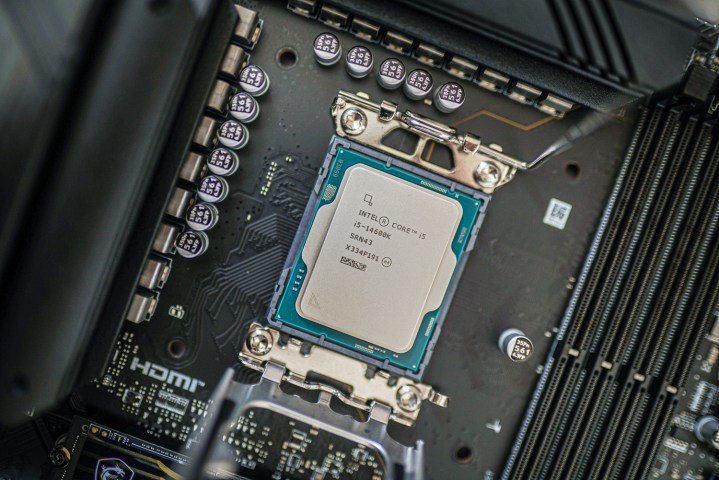
It’s easy to confuse the Core i5-14600K and Core i5-13600K based on the specs because they’re identical. Outside of a 100MHz boost to the efficient-core clock speed, both processors come with the exact same number of cores, same amount of cache, and same boost clock speed. They’re also both built on the Intel 7 process, so there isn’t a major architectural shift at play here.
| Core i5-14600K | Core i5-13600K | |
| Cores/Threads | 14(6+8) / 20 | 14(6+8) / 20 |
| L3/L2 Cache | 24MB / 20MB | 24MB / 20MB |
| Max turbo frequency | 5.3GHz | 5.3GHz |
| Base/Turbo power | 125W / 181W | 125W / 181W |
| Current price | $340 | $309 |
Intel diddo something with the Core i5-14600K, as I’ll get to in my benchmarks below. However, the improvements over the Core i5-13600K are minor, at best. I would have liked to see some extra cache to compete with AMD’s 3D V-Cache processors, as the modern 3D V-Cache chips still clearly take a lead in gaming performance.
Performance
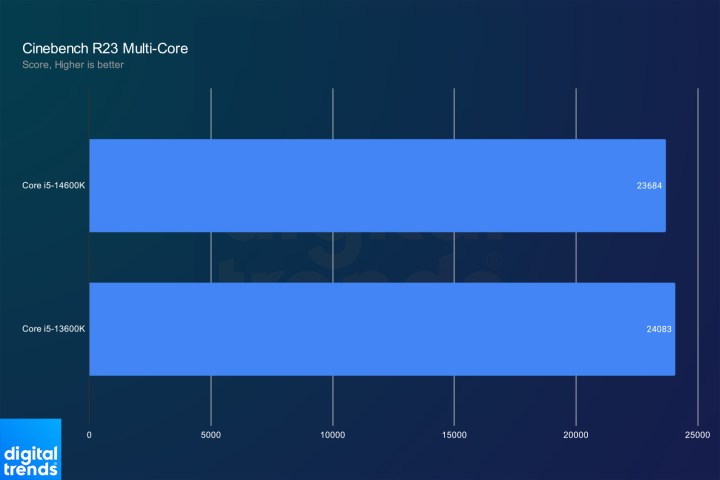
Specs don’t matter; performance does. Unfortunately, the performance of the Core i5-14600K doesn’t hold up well in all situations. Starting with a high-level look at Cinebench’s multi-core test, the Core i5-13600K actually took a minor lead. It’s only a 1.7% lead, mind you, but any lead for the last-gen chip isn’t great news for Intel’s latest and greatest.
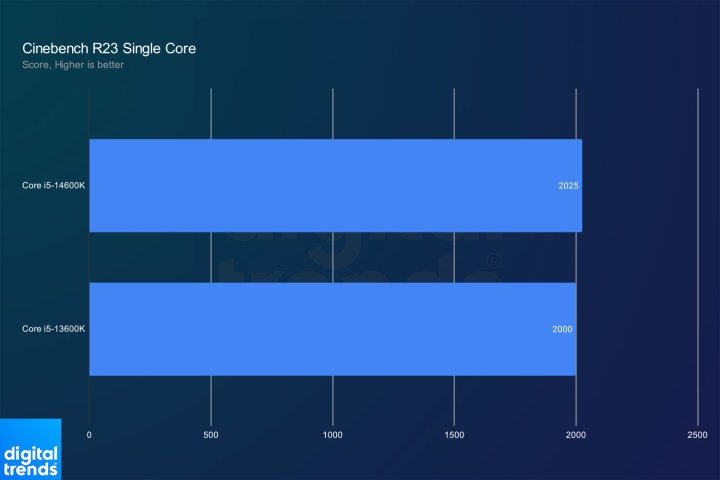
The Core i5-14600K managed to lead in single-core performance, but only by an irrelevant 1.25%. You could swap the names of these processors on either chart and the conclusion wouldn’t be any different. In Cinebench, the Core i5-13600K and Core i5-14600K show identical performance.
There are some very small gains in other apps. As you can see in Blender and Handbrake, the Core i5-14600K is just a hair faster in its stock configuration. These leads aren’t big enough to truly matter, as you can likely achieve better performance with a minor overclock to the Core i5-13600K, but they at least show Intel did something with its 14th-gen chips.
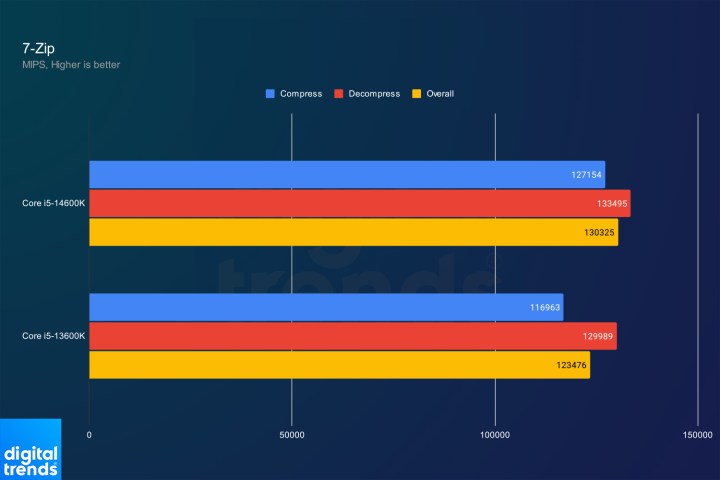
One of the bigger wins for the Core i5-14600K was in 7-Zip. Better compression performance led the newer chip to outpace the 13th-gen part by nearly 6% overall. What this chart doesn’t show, though, is the competition from AMD. Intel has taken a clear back seat to AMD in 7-Zip for the past several generations, and the improvements brought by the Core i5-14600K simply bring Intel up to par.
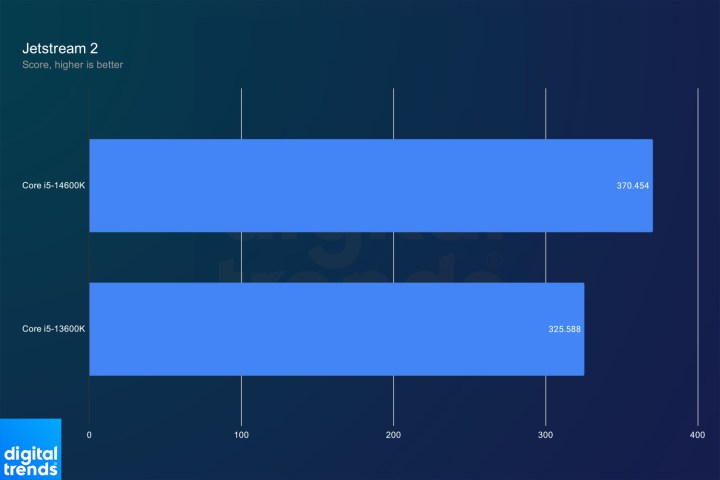
Another win for the Core i5-14600K was in Jetstream 2. This browser-based benchmark showed that the 14th-gen chip can lead by close to 14% in demanding browser applications.
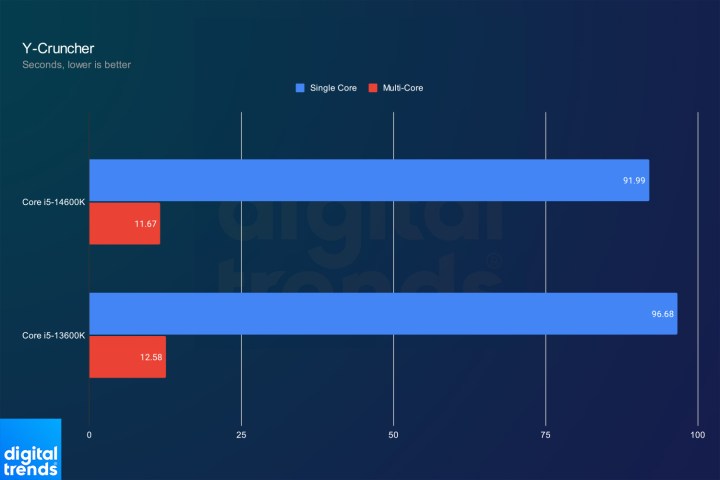
Y-Cruncher brings the chip back down to Earth, though. It’s a good showcase of what you should expect with the Core i5-14600K overall. Single-core performance is basically identical, while multi-core performance is ahead by around 5%. Some apps definitely scale higher, but others show no difference at all.
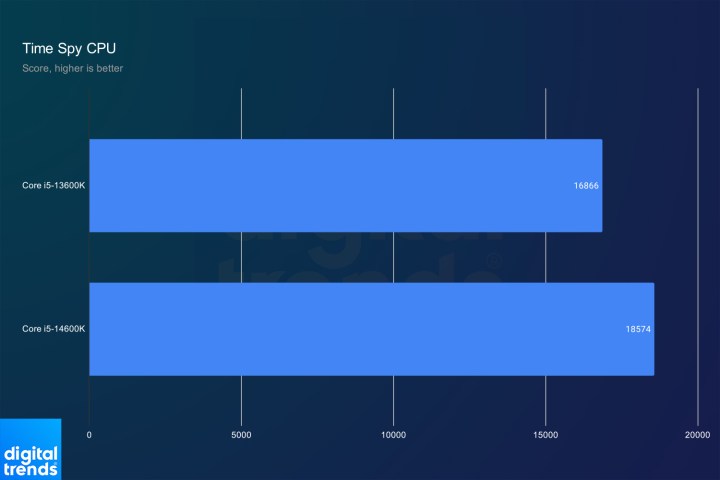
Gaming is where the Core i5-14600K makes the biggest strides. In the CPU score of 3DMark Time Spy, the Core i5-14600K showed a 10% increase over the Core i5-13600K. That’s a bit optimistic for overall gaming performance, however.
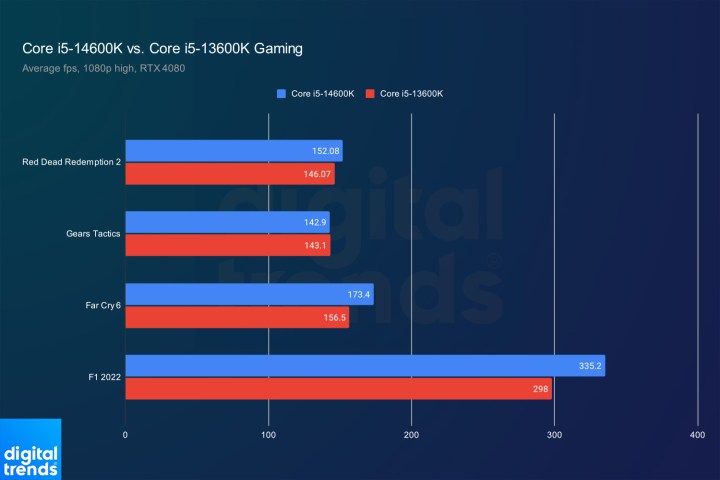
If you look at the breakdown of actual games, the two chips performed identically in Red Dead Redemption 2 and Gears Tactics. There was a solid 10% improvement in Far Cry 6 and a massive 12% jump in F1 22, however, balancing out the scales.
It’s important to keep in mind that your graphics card will play a much larger role in gaming performance as you increase quality settings and resolution. The Core i5-14600K is certainly faster, but there are games where it will show basically no benefit over the older part. And, as you bump up the resolution, the gains we see at 1080p will start to disappear.
Power and efficiency

The Core i5-14600K brings some performance improvements, no matter how minor they are. That comes at the cost of power draw, though. Across the suite of games I tested, the Core i5-14600K drew about 15% more power on average. This is just looking at gaming. In more CPU-intensive tasks, the actual wattages will be much higher.

That leads to both chips posting identical efficiency numbers. The chart above focuses on gaming once again, but it’s examining the number of frames the CPUs achieved on average per 10 watts. This shows that the gains made by the Core i5-14600K almost solely come down to increased power draw, suggesting the Core i5-13600K could close the gap with overclocking.
Which should you choose?
Intel’s 14th-gen desktop processors have been a bit of disappointment, and the Core i5-14600K continues that trend. The current pricing works in favor of the Core i5-14600K, though. It’s only about $20 to $30 more expensive right now, so those interested in a Core i5-13600K may as well spend a little extra and get the newer chip.
I highly doubt things will stay this way for long, though. As we head toward the end of the year, the Core i5-13600K’s price will likely decline sharply, putting an even wider gap between it and the Core i5-14600K. If the gap in price is anything over $30 — even a $30 price difference is questionable — you should stick with the Core i5-13600K. You can put that extra money into a nicer CPU cooler, and likely make up the performance gap with minor overclocking.
Editors' Recommendations
- It’s the end of an era for Intel
- AMD Ryzen 9 7950X3D vs. Intel Core i9-13900K: only one choice for PC gamers
- Intel Raptor Lake could deliver a 60% performance upgrade, but there’s a catch
- Intel’s budget Core i3-12100 outperformed AMD’s Ryzen 5 3600 in many games
- Intel Core i3 vs. Core i5 CPUs

